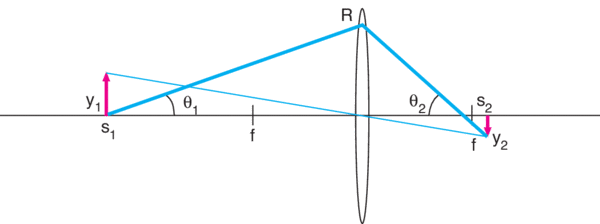To expand on @knzhou 's comment some. The sun's rays are very parallel, but not exactly parallel. Most of the time we consider them parallel but really the disk of the sun is about 0.5 degrees. However when you are focusing the sun's light you are not imaging that disk, instead the rays that are within the numerical aperture of the lens (essentially all that within the diameter of the lens) are collected and focusedyou are focusing them to the spot.
On the other hand you light bulb is an extended source, meaning that if it is 5 cm diameter, and you are 50 cm away, the disk spans about 5.7 degrees. For So from an angular perspective it is much much larger than the sun.
For most experiments you are probably trying to either image the spotlight from the on screen, or collimate the light (make a beam) using the light as a source.
If it is an extended source, you can see from above whatever height it has will be magnified to its new height by the lens. If you put an aperture at the bulb and make its extent smaller to have a very small angular size, you will get a smaller spot.
If instead of a light bulb you use a high powered LED and do the experiment you can usually image the LED and you will see a sharp square that is the LED chip and maybe even a shadow from the wire bond. If you have a light bulb with a filament, you can also image the filament.
This is a common problem, for example getting light into a single mode optical fiber that has a very small core is much easier with a laser since the rays can be made parallel than an LED where the source looks extended and you can't get the imaged spot to be smaller than the core of the optical fiber.

